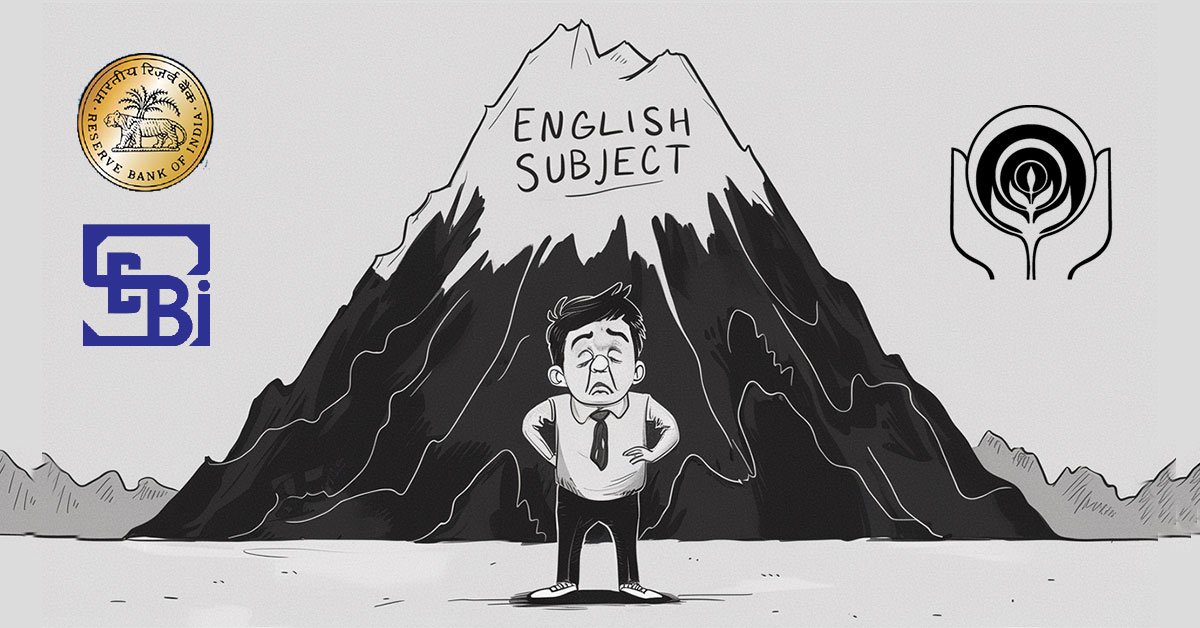Daily Current Affairs Quiz
1 July, 2025
National Affairs
1. Special Intensive Revision (SIR) of Electoral Rolls in Bihar – 2025
Context:
India’s electoral system is widely praised for enabling high participation by the poor and marginalised, unlike many Western democracies. However, the Election Commission of India’s (ECI) recent move to conduct a Special Intensive Revision (SIR) of electoral rolls in Bihar ahead of the October 2025 Assembly elections has sparked concerns about voter exclusion due to procedural and documentary barriers.
What is Special Intensive Revision (SIR)?
Special Intensive Revision (SIR) is a comprehensive, door-to-door verification of houses process to update and verify electoral rolls.
Constitutional Provisions
- Article 326 of the Constitution:
- Eligibility: Indian citizen, ≥18 years, not disqualified under any law, and ordinarily resident in the constituency.
- Article 324: Empowers ECI to supervise and conduct elections.
- Section 21 of RP Act, 1950: Allows revision of electoral rolls.
- Section 16 of RP Act, 1950: Specifies disqualifications for registration.
- Section 23 & 24 of RP Act, 1950:
- Section 23: Verification of documents for eligibility
- Section 24: Appeal provision to District Magistrate and CEO
Why SIR in Bihar?
- Last intensive revision: 2003 (with 01.01.2003 as qualifying date)
- New Qualifying Date: 01.07.2025
- Reasons for SIR:
- Rapid urbanisation and migration
- Rise in eligible youth voters
- Underreporting of deaths
- Risk of inclusion of foreign/illegal voters
- Objective: Ensure accuracy, integrity, and transparency of electoral rolls
Objective of SIR
- Ensure transparency, inclusivity, and accuracy in electoral rolls.
- Facilitate registration of:
- Elderly
- Persons with Disabilities (PwDs)
- Poor and vulnerable populations
- Reinforce voter integrity and trust in the electoral process.
2. NITI Aayog’s US Trade Proposal: A Risk to India’s Food Security?
Context:
A recent NITI Aayog paper recommends significant tariff cuts on key US agricultural imports—rice, dairy, poultry, corn, apples, almonds, and genetically modified (GM) soya—under the proposed India-US Free Trade Agreement (FTA). However, experts warn these moves could critically undermine India’s food security, farmer incomes, and trade sovereignty.
Key Recommendations and Criticisms
- Rice Tariff Elimination: A Dangerous Precedent
- NITI suggests scrapping tariffs on US rice, citing India’s rice export surplus.
- Critique: Historical lessons from the PL-480 era (1960s–70s) and GATT rounds show that prematurely locking low tariffs can lead to long-term vulnerabilities.
- Vulnerability to Global Price Volatility
- The paper ignores risks of global grain price crashes (like in 2014–2016) and price spikes (2005–2008, 2010–11).
- Without tariffs, cheap US subsidised grains could flood Indian markets, discouraging local production.
- Undermining India’s WTO Position
- Removing rice tariffs may reward US trade lobbies that consistently challenge India’s MSP and procurement policies at the WTO.
- For example, the USA Rice Federation has accused India of distorting global markets through its subsidy system.
Genetically Modified Imports
GM Corn and Soya: Containment Unrealistic
- Recommends importing:
- GM corn byproducts (DDGS) for animal feed (re-export model).
- GM soybean seeds for coastal crushing under a “controlled” model.
- Critique: India’s fragmented supply chains and poor enforcement make GM contamination likely, risking:
- Domestic food chain pollution.
- Export bans from countries rejecting GMOs.
Why This Matters
Strategic Autonomy and Rural Stability
- The paper underestimates:
- India’s reliance on tariff flexibility to manage food price shocks.
- The fragility of rural incomes and the scale of agrarian employment (700+ million people).
- Tariff flexibility is not outdated protectionism—it is a vital tool to:
- Stabilize domestic markets,
- Insulate small farmers from subsidized imports,
- And safeguard food security.
Need for Democratic Consultation
- Any decision to liberalise the farm sector under FTA must involve:
- State governments
- Farmer organizations
- Independent experts
3. QUAD Launches First-Ever ‘QUAD at Sea Ship Observer Mission’
Context:
The Coast Guards of India, Japan, the United States, and Australia have launched the first ‘QUAD at Sea Ship Observer Mission’. Conducted under the Wilmington Declaration, this is the first cross-embarkation mission involving two officers (including women) from each QUAD nation. The officers have embarked on board the US Coast Guard Cutter (USCGC) Stratton, currently route to Guam.
Strategic Significance
- Enhances:
- Maritime interoperability
- Joint operational readiness
- Domain awareness in the Indo-Pacific
- Supports the QUAD’s vision of a Free, Open, Inclusive, and Rules-Based Indo-Pacific.
- Aligns with the QUAD Leaders’ Summit (September 2024) commitment to deeper maritime cooperation.
India’s Role & Strategic Vision
- Reinforces India’s SAGAR doctrine: Security and Growth for All in the Region.
- Complements India’s Indo-Pacific Oceans Initiative (IPOI) pillars, especially:
- Capacity building
- Humanitarian assistance
- Maritime rule of law
- Promotes the concept of a ‘QUAD Coast Guard Handshake’ — aimed at trust-building and collective maritime resilience.
Banking/Finance
1. GST 2.0
Context:
As the Goods and Services Tax (GST) completes eight years of implementation on July 1, tax experts acknowledge its successes but say a lot more work needs to be done in terms of simplification and rationalisation of rates.
Achievements So Far
- GST replaced a complex, multi-state indirect tax system.
- Brought uniformity in tax treatment across States.
- Improved compliance via digitisation and e-invoicing systems.
Key Reforms Suggested (GST 2.0)
Inclusion of Fuel and Electricity in GST
- Items like petrol, diesel, ATF, natural gas remain outside GST.
- Their inclusion would:
- Reduce tax cascading
- Ease cash flow issues for sectors like transport, logistics, oil & gas
- Inclusion requires GST Council approval
Rate Rationalisation:
- Current system: Five major slabs – 0%, 5%, 12%, 18%, 28%
(plus special rates: 0.25%, 1%, and 3%) - Suggestion: Reduce to fewer slabs for simplicity and efficiency
- Rationalisation will aid compliance and reduce classification disputes
Minimising Input Tax Credit (ITC) Restrictions:
- Multiple ITC restrictions have caused confusion and litigation.
- Experts call for a more liberal and transparent ITC mechanism
Streamlining Audits and Dispute Resolution:
- Absence of a GST Appellate Tribunal (GSTAT) delays resolution of appeals.
- High pendency of GST-related cases
- PwC recommends revisiting dispute resolution frameworks for faster redressal
Addressing Procedural Hassles:
- Procedural complexity and litigation on minor issues overshadow compliance efforts.
- Need to simplify:
- Audit norms
- Return filing
- Compliance mechanisms
TH
2. RBI Financial Stability Report (FSR) – June 2025
Context:
The June 2025 FSR presents the RBI’s biannual assessment of systemic risks and financial sector resilience in India. Released against a backdrop of rising global economic and geopolitical uncertainty, the report strikes a cautiously optimistic tone on India’s macro-financial stability but flags key vulnerabilities.
Key Takeaways
Global Risks and India’s Exposure
- External headwinds from trade policy conflicts, geopolitical tensions (e.g., Middle East), and volatile capital flows have intensified.
- A 100 bps slowdown in global growth could shave off 30 bps from India’s GDP growth.
- Financial markets remain highly sensitive to interest rate signals and debt sustainability concerns, especially in advanced economies.
Macroeconomic Fundamentals Remain Strong
- India’s GDP is projected to grow steadily at 6.5% in FY26, supported by rural consumption, infrastructure spending, and corporate deleveraging.
- Inflation is well-contained, with food prices softening and imported inflation risks minimal due to stable crude prices.
- Current Account Deficit (CAD) remains manageable and forex reserves are robust, providing external sector stability.
Banking Sector: Strong but Watchful
Capital and Profitability
- Banks are well-capitalised: CRAR remains comfortably above regulatory norms, even under severe stress scenarios.
- Profitability metrics like Return on Assets (RoA) and Return on Equity (RoE) have improved, aided by higher operating efficiency and lower provisioning needs.
Asset Quality
- GNPA and NNPA are at multi-decade lows.
- However, RBI’s stress tests show potential rise in GNPA to 5–6% by 2027 under adverse scenarios.
- The most vulnerable segments are:
- Unsecured personal loans
- Retail credit in Tier-III cities and youth borrowers
- Private sector banks with higher exposure to risky segments
Credit Growth Deceleration
- Bank credit growth has slowed sharply, driven by:
- Tighter risk-weight norms on personal loans and NBFC exposure.
- Cautious lending approach amid rising delinquency signals.
Liquidity and Cost of Funds
- Banks face pressure on Net Interest Margins (NIMs) due to:
- A higher share of EBLR-linked loans which reprice rapidly.
- Increasing reliance on high-cost term deposits and CDs, eroding margins.
- The CRR cut by 100 bps has helped offset some of this pressure.
NBFCs, Mutual Funds, and Insurance: Mixed Signals
NBFCs
- Continue to show capital adequacy and profitability.
- Stress is emerging in personal loan portfolios, especially fintech-driven, low-ticket lending.
Mutual Funds and Clearing Corporations
- Stress tests show resilience, though market volatility remains a concern.
- Regulatory tightening includes stricter disclosure, monitoring, and cyber resilience measures.
Insurance Sector
- Maintains solvency well above the regulatory minimum.
- Digitisation of premium payments and growing penetration of NPS/APY has strengthened long-term sectoral depth.
Corporate Bond Market
- India’s bond market saw a record ₹9.9 trillion in fresh issuances in FY25.
- However, secondary market activity remains subdued, limiting market depth.
- Credit spreads widened marginally due to liquidity constraints and global risk sentiment, despite softening yields.
Regulatory & Institutional Developments
- RBI and other regulators are aligning with global standards:
- Digital Lending Norms to improve borrower protection and app transparency.
- Cybersecurity frameworks like FIRE and MNRL for robust threat monitoring.
- SEBI reforms in derivatives, investor grievance redressal, and FPI regulation.
- Deposit insurance coverage now spans 97.6% of accounts.
- Significant activity in GIFT City, enhancing India’s offshore finance capacity.
Risks and Outlook
Emerging Concerns
- Rising delinquency in unsecured retail loans.
- Shift in bank deposit profiles from CASA to term deposits.
- Credit growth slowdown due to risk aversion and regulatory tightening.
- Rising global instability, commodity shocks, and market corrections.
Positive Anchors
- Strong capital buffers across institutions.
- Regulatory agility and forward-looking policy reforms.
- Improved corporate balance sheets and private investment sentiment.
3. PhonePe Enters Co-Branded Credit Card Market with HDFC Bank Partnership
Context:
PhonePe and HDFC Bank have launched a co-branded credit card—marking PhonePe’s entry into the co-branded card segment.
Key Highlights:
- The card is issued on the RuPay network and is named:
- PhonePe HDFC Bank Co-Branded RuPay Credit Card.
- Designed for UPI-based credit card spending, especially within the PhonePe app ecosystem.
- Can be used seamlessly across UPI-enabled merchants in India.
Card Variants
- The credit card is available in two versions:
- ‘UNO’ and ‘Ultimo’
About PhonePe
- Founded: August 2016
- Users: Over 61 crore (610 million) as of April 2025
- Merchant Network: 4+ crore (40 million) digital payment acceptance points across India
- Former Name: PhonePe Private Limited (now PhonePe Limited)
Agriculture
1. NABARD and ICAR-NIRCA Collaborate to Train FPOs
Context:
NABARD (National Bank for Agriculture and Rural Development) has partnered with ICAR–National Institute for Research on Commercial Agriculture (NIRCA), Rajahmundry.
- The collaboration aims to train Farmers’ Producers Organisations (FPOs) and farmers in:
- Post-harvest management
- Processing technologies for turmeric and chilli
Significance of the Training
- Turmeric and chilli are highly susceptible to:
- Moisture damage
- Microbial contamination
- Adoption of modern post-harvest techniques is expected to:
- Enhance crop value
- Improve market competitiveness
- Reduce post-harvest losses
2. India’s Fertiliser Paradox: Need for a New National Fertiliser Policy
Context:
India is the second-largest consumer of fertilisers globally. Despite increased domestic production, 30% of fertilisers are still imported, making India vulnerable to global supply shocks, especially during geopolitical conflicts or trade disruptions.
Key Challenges Highlighted
Overuse and Imbalance
- Average fertiliser use: 141.2 kg/hectare (NPK)
- Current N:P:K usage ratio: 6.7:2.7:1 (vs. recommended 4:2:1)
- Overuse of Nitrogen (N): 67.5%
- Overuse of Phosphorus (P): 35%
Low Fertiliser Use Efficiency
- Nitrogen: 30–35%
- Phosphorus: 15–20%
- Potassium: 50–60%
This implies a significant share of nutrients is lost, contributing to soil degradation, groundwater contamination, and climate change through nitrous oxide emissions.
Financial Burden
- FY24 Fertiliser Subsidy: ₹1.75 lakh crore
- Urea alone: ₹1.31 lakh crore
- Current subsidy regime incentivizes overuse of urea, discouraging balanced nutrient application.
Global Comparison
- India mirrors China’s pre-2015 fertiliser subsidy mistakes, which led to overapplication and environmental degradation.
Recommendations for a New Fertiliser Policy
- Soil Health and Balanced Nutrition
- Promote bio-fertilisers and nano-fertilisers
- Encourage crop-specific fertiliser use based on soil health cards
- Farmer Education & Capacity Building
- Awareness on overuse hazards and benefits of balanced fertilisation
- Use of mobile-based advisory services, field demos, and training
- Technological Integration
- Adoption of:
- AI & Machine Learning
- Remote Sensing & GIS
- Blockchain for traceability and subsidy disbursement
- Adoption of:
- Attract Youth & Startups
- Innovation grants for agri-entrepreneurs
- Startups in smart fertilisation and precision agriculture
- CSR Alignment
- Align Corporate Social Responsibility (CSR) funds toward agri-education and sustainable nutrient practices
- Fertiliser Subsidy Reforms
- Direct Benefit Transfer (DBT) to farmers, not manufacturers
- Supply based on landholding, soil type, crop need
- Incentivise farmers for soil health-based practices
- Reduce Import Dependency
- Boost domestic fertiliser production
- Develop alternative nutrient sources using indigenous resources
3. Jhum/Shifting Cultivation
What It Is?
Shifting cultivation is a traditional subsistence farming method where small patches of forest (called swiddens) are cleared—usually through slashing and burning—and cultivated for a few years. Once soil fertility declines, the farmer abandons the land, allowing it to regenerate naturally during a fallow period before returning after a decade or more.
How It Works: Key Features
- Slash-and-Burn Clearing: Vegetation is cut, dried, and burned. The resulting ash boosts soil nutrients.
- Short Cultivation Cycle: Food crops like rice, maize, roots, and tubers are grown until yield declines.
- Extended Fallow Period: Land is left unused for natural regeneration, often longer than the cultivation period.
- Manual Labor: Basic tools like hoes and digging sticks are used; no machinery is involved .
- Subsistence Focus: Primarily serves the farmer’s family and local community.
Where It’s Practiced
- Tropical forests globally: Central & South America, Sub-Saharan Africa, Southeast Asia, parts of India.
- India: Prevalent in hilly tribal areas—Northeast, Odisha, Chhattisgarh, Andhra Pradesh—where it’s known locally as jhum, podu, or chena.
Advantages
- Low-input and cost-effective: Relies on basic labor and natural soil fertilization.
- Ecosystem-sensitive: Long fallows allow forests to regenerate; secondary vegetation helps prevent erosion and supports biodiversity.
- Cultural significance: Deeply embedded in indigenous traditions and lifestyles.
Challenges & Issues
- Deforestation and Habitat Loss: Frequent clearing reduces forest coverage and disrupts ecosystems.
- Soil Degradation: Shortened fallow cycles lead to nutrient depletion, increased erosion, and lowered agricultural productivity .
- Land Pressure: Population increase and reduced fallow periods intensify ecological stress.
- Unsustainability: Overuse turns shifting cultivation into destructive slash-and-burn farming, especially when regeneration does not occur.
Facts To Remember
1. EC clarifies on rules for intensive revision of Bihar voter list
As the electoral rolls in Bihar are undergoing a special intensive revision (SIR), the Election Commission (EC) uploaded the 2003 list of 4.96 crore electors, and clarified that a person born after 1987 need not give the proof of birth of parents if their names figure on the 2003 rolls.
2. Bank Credit Growth Slows to 9.8% in May 2025 Amid Weak Retail Lending
According to the Reserve Bank of India (RBI), non-food bank credit growth decelerated to 9.8% year-on-year (YoY) in May 2025, compared to 16.2% in May 2024. The slowdown was most prominent in the retail lending segment, including personal loans, credit cards, and vehicle finance.
3. Above Normal Rain in July: IMD
The India Meteorological Department (IMD) has asked authorities and residents of central India, Uttarakhand and Haryana to stay alert to the risk of flooding as the southwest monsoon is expected to be above normal in most parts of the country in July, at 106 per cent of the long period average (LPA).
4. Govt Set to Launch Digital Platform for Power Sector Soon
The government is working to launch a digital platform to enhance coordination, data sharing, and innovation in the power sector.
5. Dollar’s deep dive masks Re’s steeper slide vs euro
The dollar ended June with its worst first-half performance in four decades. However, the dollar’s slide in the international markets has been masking the rupee’s weakness, which is seen in its movement against the euro.
6. SBI turns 70
tate Bank of India (SBI), the country’s largest and most trusted bank, marks 70 years since its formation on July 1, 1955.















